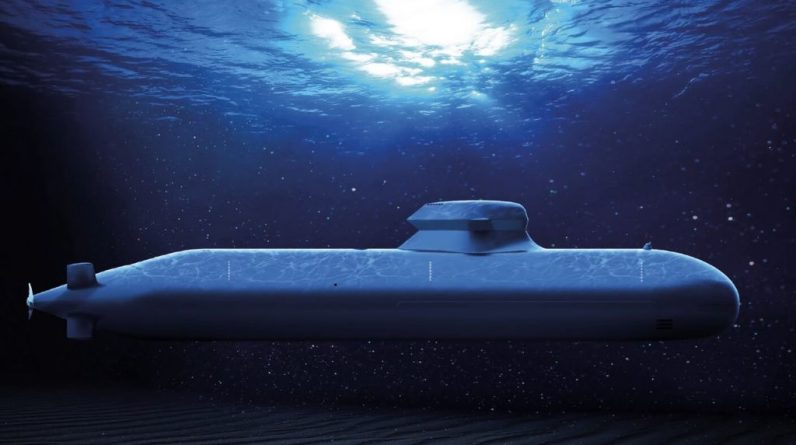
Exploring the depths of the ocean has always fascinated humankind. To delve into the mysterious world beneath the surface, we rely on remarkable technological advancements such as submarines. But how deep can a submarine go? In this article, we will find out just that!
Embed from Getty ImagesThe Basics of Submarines
Embed from Getty ImagesSubmarines are watercraft designed to operate underwater. They are equipped with special features that allow them to submerge and resurface, providing a safe environment for human exploration. Furthermore, these vessels are carefully engineered to withstand the immense pressure exerted by the water at great depths.
The Challenge of Pressure
Embed from Getty ImagesAs a submarine descends deeper into the ocean, it encounters increased pressure. The pressure exerted by the water column above a submarine at great depths can be crushing. For every 33 feet (10 meters) of depth, the pressure increases by about 14.5 pounds per square inch (psi). Therefore, the deeper a submarine goes, the more pressure it has to endure.
Submarine Design and Construction
To answer the question, “How deep can a submarine go?” It’s important to keep in mind that, to withstand extreme pressure, submarines are constructed with strong, durable materials such as high-grade steel and titanium alloys. Moreover, these materials possess excellent structural integrity and can resist the forces exerted by the surrounding water.
Embed from Getty ImagesAdditionally, remote control submarines are designed with a cylindrical shape, which helps distribute the pressure evenly across the hull. The hull is divided into compartments to ensure the safety and stability of the vessel. Each compartment can be sealed off in case of damage, allowing the submarine to remain afloat.
The Limitations of Depth
Despite their robust construction, submarines have limitations when it comes to answering “How deep can a submarine go”. In addition, the depth to which a submarine can go depends on several factors, including the design, materials used, and the technology available at the time of construction.
Embed from Getty ImagesThe maximum depth reached by a submarine is often referred to as its “crush depth.” This is the point at which the pressure becomes too great, and the submarine risks structural failure. Going beyond the crush depth can lead to catastrophic consequences, including implosion and loss of life.
Reaching the Abyss: The Bathyscaphe Trieste
One of the most notable achievements in deep-sea exploration was the descent of the Bathyscaphe Trieste to the Challenger Deep in the Mariana Trench, the deepest diving submarine at the time.
Embed from Getty ImagesIn 1960, Swiss oceanographer Jacques Piccard and U.S. Navy Lieutenant Don Walsh piloted the Trieste to a record-breaking depth of approximately 35,797 feet (10,911 meters). This extraordinary feat pushed the boundaries of human exploration and shed light on the previously unexplored depths of the ocean.
Advancements in Submarine Technology
When it comes to how deep can a submarine go, technology has played a significant role. For instance, this question has led to the invention of remote control submarines solely for the purpose of exploring the deep sea. The introduction of stronger materials, improved hull designs, and advanced pressure-resistant systems have expanded the potential depth range for submarines.
Embed from Getty ImagesModern submarines, such as the Deepsea Challenger and the Limiting Factor, have been built to withstand immense pressures and explore the deepest parts of the ocean. These deepest diving submarines utilize state-of-the-art engineering and innovative materials to push the boundaries of deep-sea exploration further.
Deep-Sea Exploration and Discoveries
Embed from Getty ImagesHumankind’s curiosity about how deep can a submarine go has opened a conduit for many discoveries under the sea. From new species of marine life to geological formations and underwater ecosystems, each expedition brings us closer to understanding the mysteries of the deep.
Exploratory missions using manned and remote control submarines have provided valuable insights into the ocean’s ecology, geology, and potential resources. These discoveries have profound implications for scientific research, conservation efforts, and the future of our planet.
Exploring the Future of Submarines
As technology continues to advance, the future of submarine exploration looks promising, as it can solve the mystery of how deep can a submarine go. Scientists and engineers are working on developing even more resilient and efficient submarines capable of withstanding extreme depths.
Embed from Getty ImagesFuture or remote control submarines may incorporate advanced materials, cutting-edge propulsion systems, and enhanced navigational capabilities. They could revolutionize our understanding of the deep sea, leading to groundbreaking scientific breakthroughs and unlocking the secrets of unexplored territories.
Conclusion
Submarines have revolutionized our ability to explore the depths of the ocean. While there are limits to how deep can a submarine go, advancements in technology have expanded those boundaries.
Embed from Getty ImagesThe human quest for knowledge and understanding drives us to push the limits of exploration, unraveling the mysteries of the deep sea one dive at a time.






